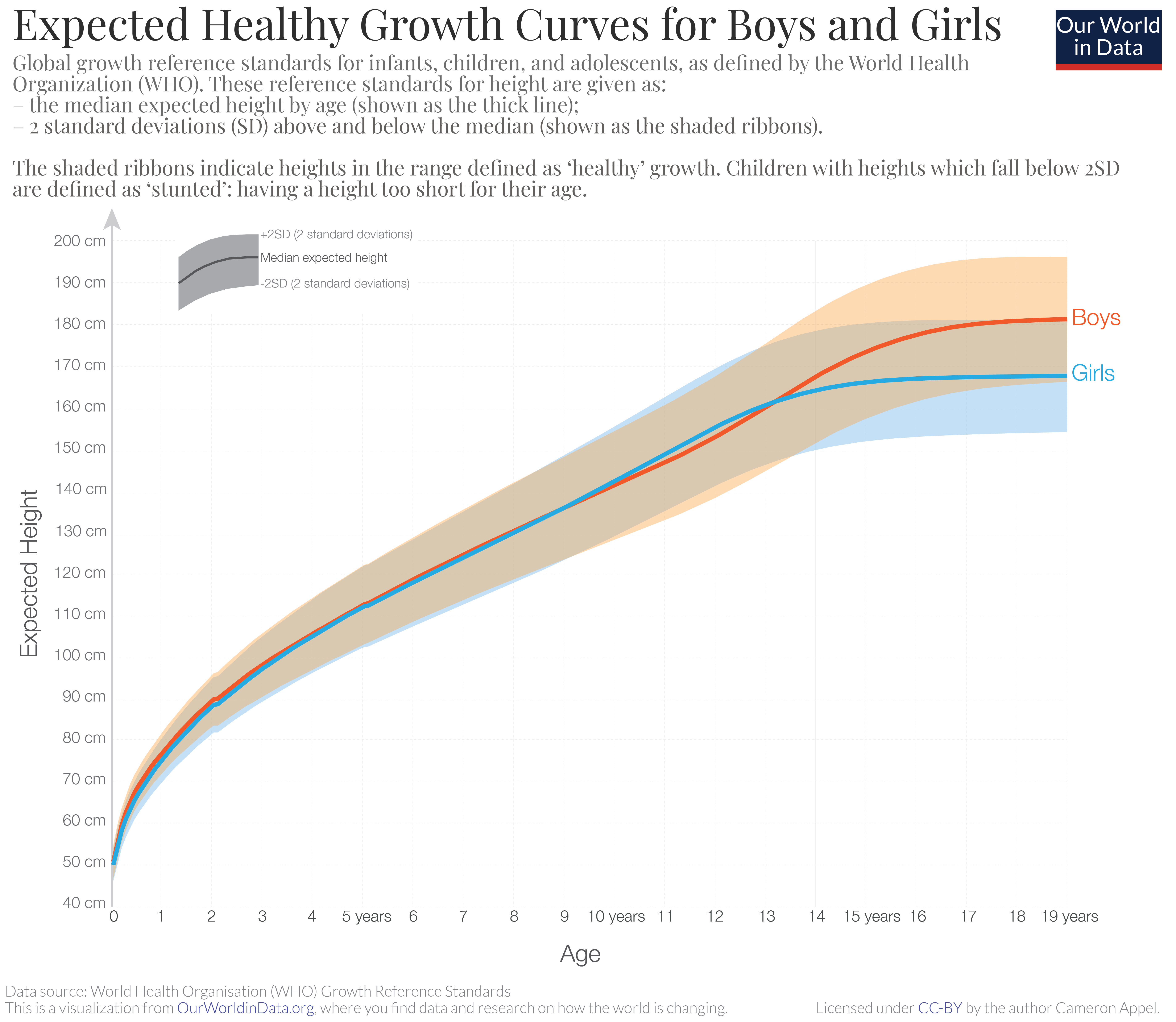What is childhood stunting?
Stunting is an important marker of childhood malnutrition. But what is it, and how is it measured?
Stunting is one of the leading measures used to assess childhood malnutrition. It indicates that a child has failed to reach their growth potential as a result of disease, poor health and malnutrition.1
A child is defined as ‘stunted’ if they are too short for their age. This indicates that their growth and development have been hindered.
Stunting is not just an issue during childhood. It affects both physical and cognitive development – impacts that can persist throughout someone’s life. There is some evidence to suggest that ‘catch-up growth’ is possible: that it is possible to reverse some of these impacts if environmental conditions significantly improve. But this is not always the case.
How is stunting measured?
Stunting is measured based on a child’s height relative to their age.
The World Health Organization (WHO) sets out global growth curves – these show the expected trajectory of a child’s growth from birth through to adulthood. Of course, we would not expect everyone to be exactly the same height – there is a range of factors, such as genetics, which influence our height and are not a reflection of poor health or malnutrition. These growth curves therefore span a range of heights.
We see these growth curves for boys and girls in the chart. The median growth curve is shown by the thick line. The ribbons around this median show the ‘acceptable’ range. This range is two standard deviations above and below the median.

A child whose height falls below the bottom of the ribbon – that is, two standard deviations below their expected height for their age – is defined as ‘stunted’.
In a population, the prevalence of stunting is defined as the share of children under five years old that fall two standard deviations below the expected height for their age.
To estimate the prevalence of stunting, researchers draw on household and demographic surveys, which include measurements of childhood growth, alongside official health data from governments that monitor child development.
What are the causes of stunting?
Stunting can occur throughout childhood, but is largely determined by a child’s “first 1,000 days”. This stretches from the period just before conception (meaning the nutritional status of mothers is very important) through to the child’s second birthday. This is when a child experiences its most rapid phase of growth and development.
Stunting occurs when a child does not have sufficient nutrition to grow and develop. This can be caused by a poor diet alone, but is often exacerbated by disease and poor health.
When a child is fighting poor health or disease, its nutritional requirements are often higher – it needs more energy and nutrients to not only grow, but to also fight infection. The absorption of nutrients might also be impacted. For example, if it experiences repeated bouts of diarrheal diseases – which are common in children – its ability to retain nutrients will be severely impacted.
Therefore, to prevent stunting we must ensure mothers have good nutrition and health prior to, and during, pregnancy; a child has access to a sufficient and nutritious diet; has access to clean water, sanitation and hygiene facilities to prevent infection; and has adequate treatment to recover quickly from disease and poor health.
Keep reading at Our World in Data
Explore our page on hunger and undernourishment
Endnotes
WHO (2015). Stunting in a nutshell. World Health Organization.
Cite this work
Our articles and data visualizations rely on work from many different people and organizations. When citing this article, please also cite the underlying data sources. This article can be cited as:
Hannah Ritchie (2022) - “What is childhood stunting?” Published online at OurWorldInData.org. Retrieved from: 'https://ourworldindata.org/stunting-definition' [Online Resource]BibTeX citation
@article{owid-stunting-definition,
author = {Hannah Ritchie},
title = {What is childhood stunting?},
journal = {Our World in Data},
year = {2022},
note = {https://ourworldindata.org/stunting-definition}
}Reuse this work freely
All visualizations, data, and code produced by Our World in Data are completely open access under the Creative Commons BY license. You have the permission to use, distribute, and reproduce these in any medium, provided the source and authors are credited.
The data produced by third parties and made available by Our World in Data is subject to the license terms from the original third-party authors. We will always indicate the original source of the data in our documentation, so you should always check the license of any such third-party data before use and redistribution.
All of our charts can be embedded in any site.

